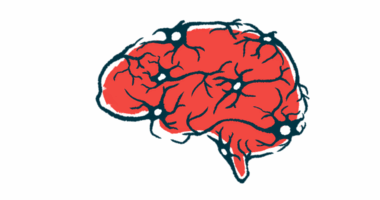Top 10 Parkinson’s stories of 2024
In 2024, Parkinson’s News Today kept readers informed with updates on the latest research, treatments, and clinical trials for Parkinson’s disease.
Here are the 10 most-read stories in 2024, each with a short summary. We look forward to continuing to support the Parkinson’s community and sharing informative stories to our readers in 2025.
No. 10 – Dementia may occur later after Parkinson’s diagnosis
Dementia, which can rob patients of their memory and ability to control emotions, can sometimes occur as a nonmotor symptom of Parkinson’s. However, a study found most patients do not develop dementia within the first 10 years of their Parkinson’s diagnosis. This challenges the common belief that dementia is frequent and occurs early in the course of the disease. Most patients in the study went on to develop dementia within 15 to 25 years after being diagnosed with Parkinson’s, with older men and those with less formal education experiencing it earlier.
No. 9 – Pesticides, herbicides used in farming linked to higher Parkinson’s risk
A study funded by the Michael J. Fox Foundation for Parkinson’s Research found people exposed to high levels of farming herbicides and pesticides in the U.S. are up to 36% more likely to develop Parkinson’s. With growing evidence that environmental factors can increase the risk of developing the disease, researchers say it is time to take steps to prevent Parkinson’s by reducing exposure to harmful chemicals.
No. 8 – Magnes’ smart shoes available in US, EU markets
Not long after getting cleared for the U.S. market, Magnes’ NUSHU smart shoes received CE marking approval this past summer to enter the European Union market. The smart shoes use sensors to pick up a patient’s walking pattern and haptics to provide feedback on how Parkinson’s is changing the way a person walks. This can help a patient confirm steps, regain balance, and maintain rhythm, making NUSHU helpful in the clinic or at home.
No. 7 – Prescribing exercise as medicine may help manage Parkinson’s
Engaging in regular physical exercise can help people with Parkinson’s stay active, keep balance, and ease motor symptoms. But there’s growing evidence of its broader benefits in preventing the disease or slowing its progression. As such, researchers in Denmark and Sweden suggest prescribing personalized physical exercise programs early in the course of disease, along with standard medical treatments, to improve how Parkinson’s is managed.
No. 6 – Machine learning uses Parkinson’s progression to identify subtypes
Not everyone experiences Parkinson’s in the same way, which can make its diagnosis or choice of treatment difficult. Researchers at Cornell University in New York used machine learning, a type of artificial intelligence, to identify three Parkinson’s subtypes by recognizing patterns in how symptoms progress in newly diagnosed patients. Each subtype also appears to have unique genetic markers, which could offer targets for earlier diagnosis and more personalized treatment.
No. 5 – Buntanetap may halt cognitive decline in early Parkinson’s
A Phase 3 clinical trial found buntanetap, an investigational oral treatment being developed by Annovis Bio, stopped cognitive decline in early Parkinson’s and improved cognition in those with mild dementia. It also improved motor function in patients diagnosed more than three years prior to treatment and in those with difficulty balancing and walking. Buntanetap targets proteins that form toxic clumps in neurodegenerative diseases.
No. 4 – Thyroid hormones may be linked to cognitive decline
The thyroid gland controls how the body uses energy. A study in China found low levels of thyroid hormones may be linked to thinking and memory problems in people with Parkinson’s disease. Patients who had memory problems had much lower levels of a thyroid hormone called FT3 in the bloodstream, a finding that suggests FT3 could be used as a marker for doctors to monitor cognitive decline in Parkinson’s.
No. 3 – Changes in gut microbiome may influence progression of symptoms
People with Parkinson’s have substantial changes in their gut bacteria compared to healthy individuals, with some of these changes connected to a faster progression of motor symptoms. This adds to growing evidence that the gut microbiome — the bacteria and other microbes in the gut — may influence how Parkinson’s progresses via the gut-brain axis, opening possibilities for treating the disease.
No. 2 – Difficulty in seeing, understanding space predicts cognitive impairments
A four-year study found early difficulties with visual processing and spatial reasoning often predicted future cognitive problems. Results also revealed cognitive function in those with Parkinson’s either stayed stable or worsened over time. In patients with cognitive decline, increased slow brain waves — a brain activity pattern linked to sleep — at the study’s start also predicted worsening cognitive abilities after two and four years.
No. 1 – Levodopa taken at bedtime may make for better sleep
Sleep issues affect many people with Parkinson’s, causing frequent nighttime awakenings. A small study found that taking levodopa, the mainstay of Parkinson’s treatment, before bed helped reduce how often patients woke up and how long they stayed awake at night. Researchers used an actigraphy device, which monitors sleep-wake patterns, to measure these changes, as patients didn’t always notice the improvements themselves. Using objective tools like actigraphy can help accurately assess sleep quality, especially in the early and middle stages of Parkinson’s.
***
We at Parkinson’s News Today hope our reporting in 2024 has been a source of useful information for everyone affected by Parkinson’s disease, and we wish everyone a bright and happy new year!






